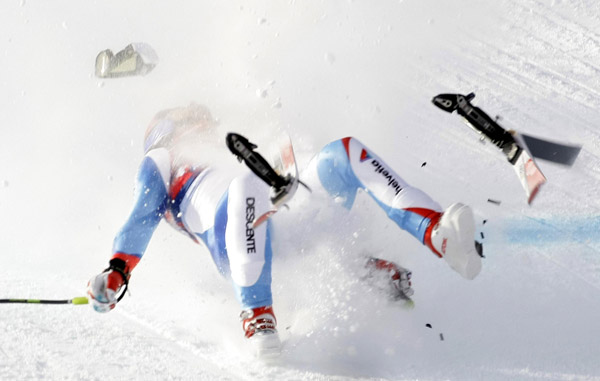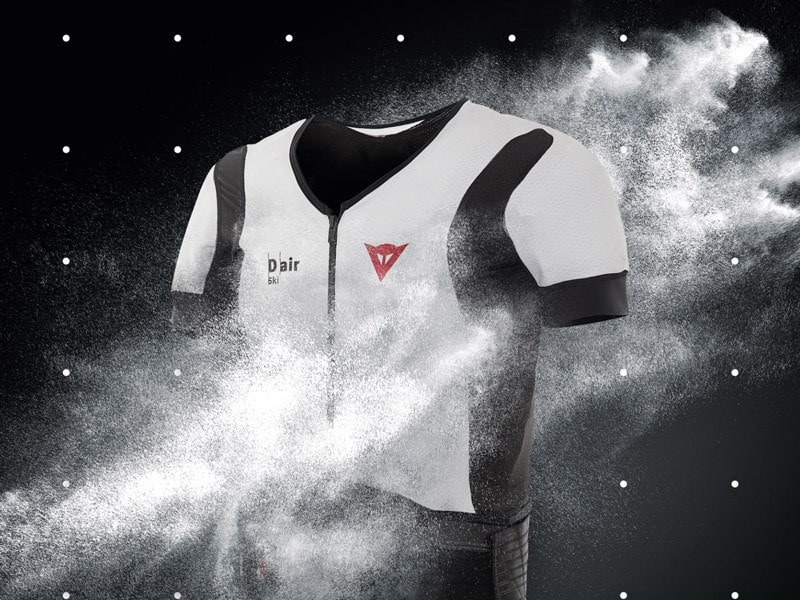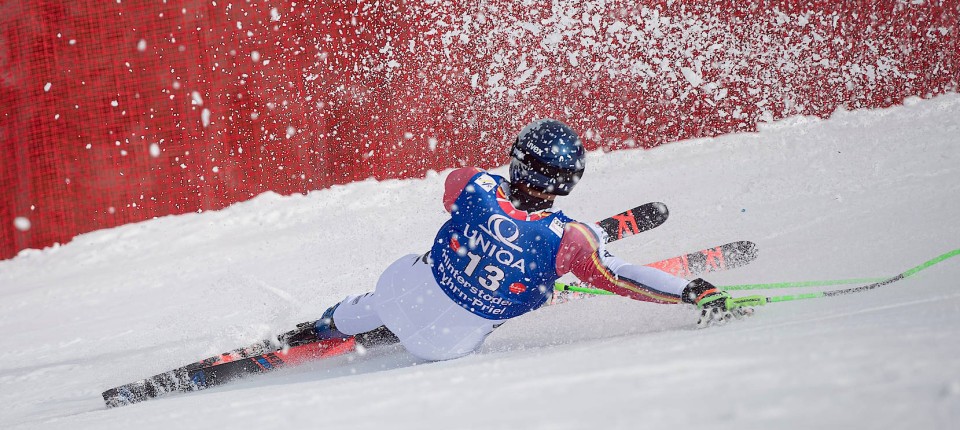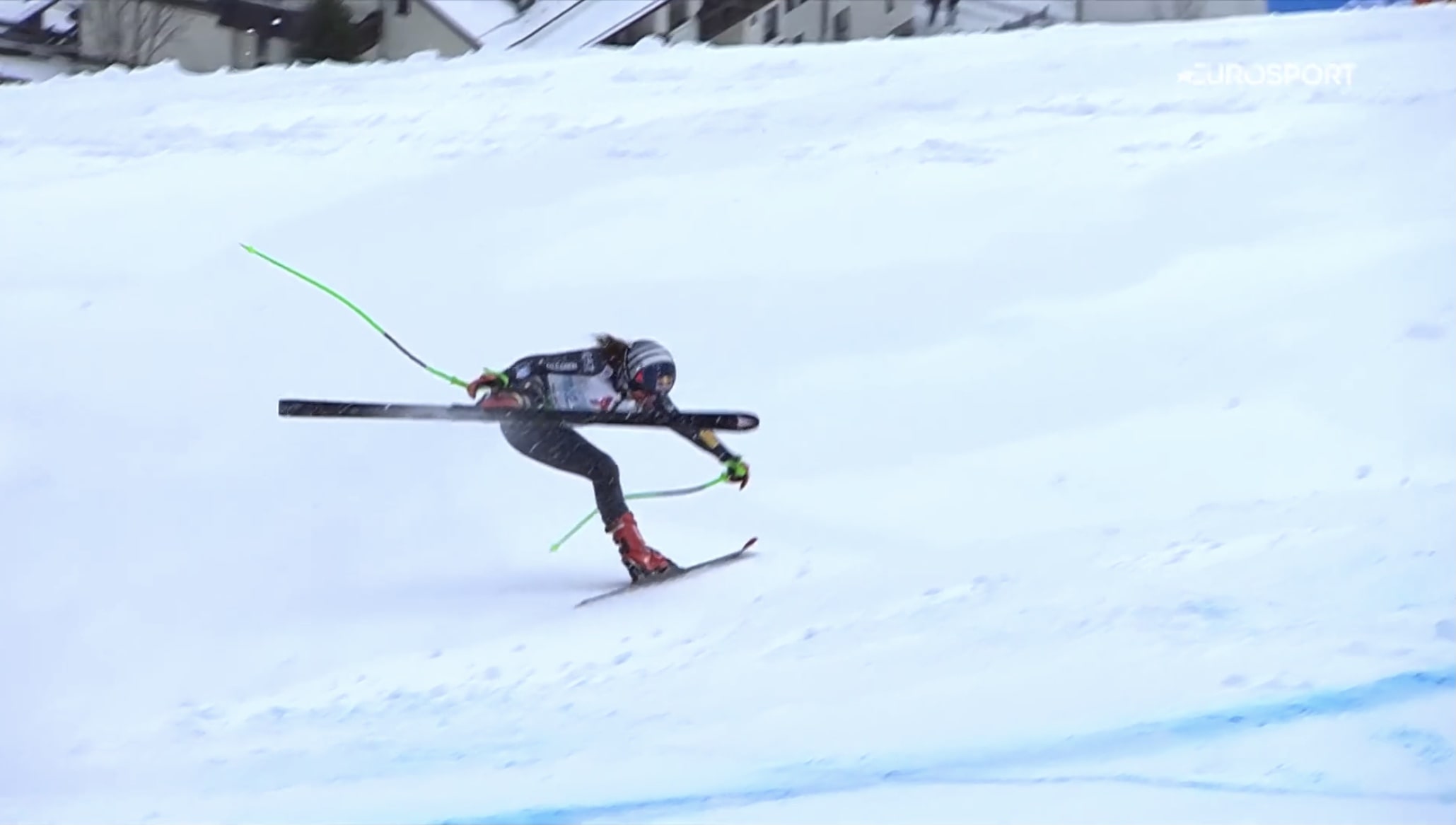
The International Ski & Snowboard Federation (‘FIS’) is planning to make the use of airbags compulsory for Downhill and Super-G ski racers from 2024/25. According to a FIS spokesperson, airbags have “proven to be a valuable measure to increase the safety of athletes in speed races.” The recent serious crash of Canadian Broderick Thompson brought attention back to the discussion about making the use of airbags compulsory for FIS athletes in the speed disciplines. Experts believe that his injuries would have been much more benign if Broderick Thompson had used an airbag similar.
However, not everyone agrees with the decision by FIS and some officials, coaches, and athletes are outspoken about their criticism of this ruling. Karl-Heinz Waibel from the German Ski Association believes that the focus on airbags is misguided, “There is no need for an airbag against serious back injuries. The back protector has been doing a good job since the 1990s,” Waibel explained to the German Press Association (‘DPA’). In his opinion, the airbag may be able to protect against bruises. “But no ski racer complains about upper body bruises.” Waibel believes that it is far more important to focus on the prevention of knee injuries, which are much more common among ski racers.

Italian company Dainese was the first company to produce these airbags for skiers. Initially developed for motorcyclists, the design was adapted to function for skiers. A system of sensors with three accelerometers and three gyroscopes in communication with GPS at a rate of 1,000 times per second determines when a skier is about to crash, and activates the airbag. It was first used by Austrian skier Matthias Mayer and the airbag deployed during a crash in in Val Gardena in 2015. Mayer still broke two thoracic vertebras and U.S. ski racer Ted Ligety suggested that the airbag may have contributed to the injuries, and retired Swiss ski racer Beat Feuz also chimed in, “I was very skeptical about this system due to the fall of my Austrian buddy Matthias Mayer. Mayer broke two vertebrae at the time, even though he carried the airbag. And for me, there is still no proof that this construction really protects against injuries.”

German ski racer Thomas Dreßen dislocated both shoulders in a crash in 2020 while wearing an airbag. It is believed that the force of the airbag inflating at lightning speed caused the injury. Likewise, teammate Manuel Schmid suffered several spinal fractures in a crash with an airbag during summer training in Saas Fee, Switzerland, in July 2021. Teammate Romed Baumann, who had skied for seven years with an airbag, discontinued the use, stating, “I didn’t have a good feeling anymore.”

On the other hand, several international top athletes swear by the use of their Dainese airbag. Switzerland’s Marco Odermatt and Niels Hintermann, as well as Italy’s Queen of Speed Sofia Goggia always ski with an airbag. Odermatt admits that it was his girlfriend who convinced him to wear it. “Stella asked me one evening if I was using one [airbag]. When I said no, she asked me why not? That made me think. And I have come to the conclusion that the airbag can really help me.”
Before the new ruling is implemented by FIS, a few liability questions need to be cleared up, such as: who is liable if athletes wear an airbag — against their will — in the race and it malfunctions? What happens if an airbag is triggered incorrectly and causes an athlete to fall? There will most certainly be a lot of debate around this issue before the new rule can be enforced by FIS.
